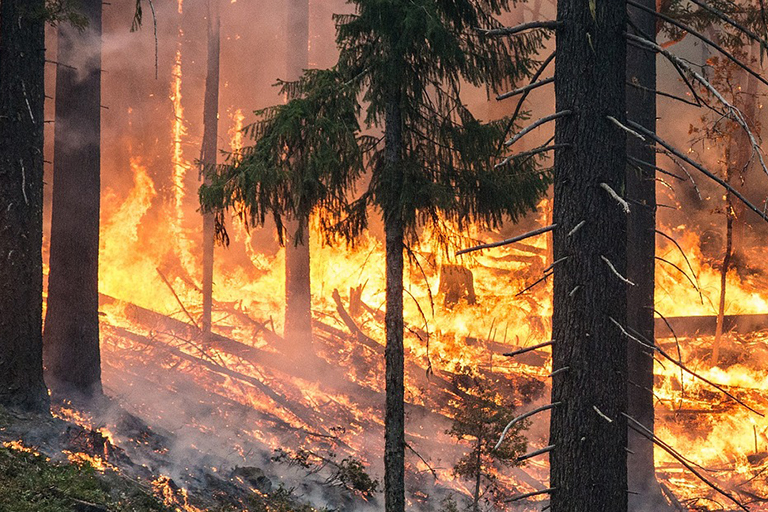Wildfires can voraciously destroy homes, equipment, property and even take the lives of the professionals who are on the front lines battling the blaze in order to save families and homes. We encourage you to learn about prevention and prepare for dangers related to wildfires.
Whether you are burning debris, running equipment, or tending a campfire — always make sure that fire, sparks and embers are contained and safely extinguished.
Fire that gets near power lines can create additional hazards. Stay safe with these tips:
• If you see downed power lines, or other damaged electrical equipment, notify the local electric utility as soon as possible because the lines could still be live and present a fire risk.
• Downed power lines, stray wires and debris in contact with them all have the potential to deliver a fatal shock. Stay clear of fallen power lines and damaged areas that could hide hazards.
• Contact the electrical utility immediately if you see fire near transmission or distribution lines.
If a wildfire is threatening your area, stay tuned to local media for reports and evacuation information. Smoke limits visibility, and evacuation routes can be cut off by fire, traffic, or fallen trees or power lines. Follow the instructions of local officials. If you are ordered to evacuate — do so.
If you have enough time, turn off the electricity, water, gas, and propane tanks as well as any other bottled gas you may have before evacuation. In addition, disconnect appliances and electronics to reduce the chance of electrical shock when power is restored.
With plenty of advance time and planning, Federal Emergency Management Agency (FEMA) offers steps you can take to reduce your home’s exposure to flames and radiant heat—both outside and in. A full list can be found on FEMA’s preparedness website, www.ready.gov. A few of these steps include:
• Cleaning roof and gutters; raking leaves and twigs; and clearing all flammable vegetation.
• Asking your electric utility to clear branches from power lines.
• Removing tree limbs within 15 feet of the ground.
It is also recommended that you limit the flammable vegetation and material around your home for at least 30 feet on all sides.
FEMA also encourages everyone to create a portable disaster preparedness kit with enough supplies to last at least three days. This kit should include such items as water, food, blankets, pillows, clothes, a first aid kit, medicines, toiletries, flashlights, batteries, and a radio.

